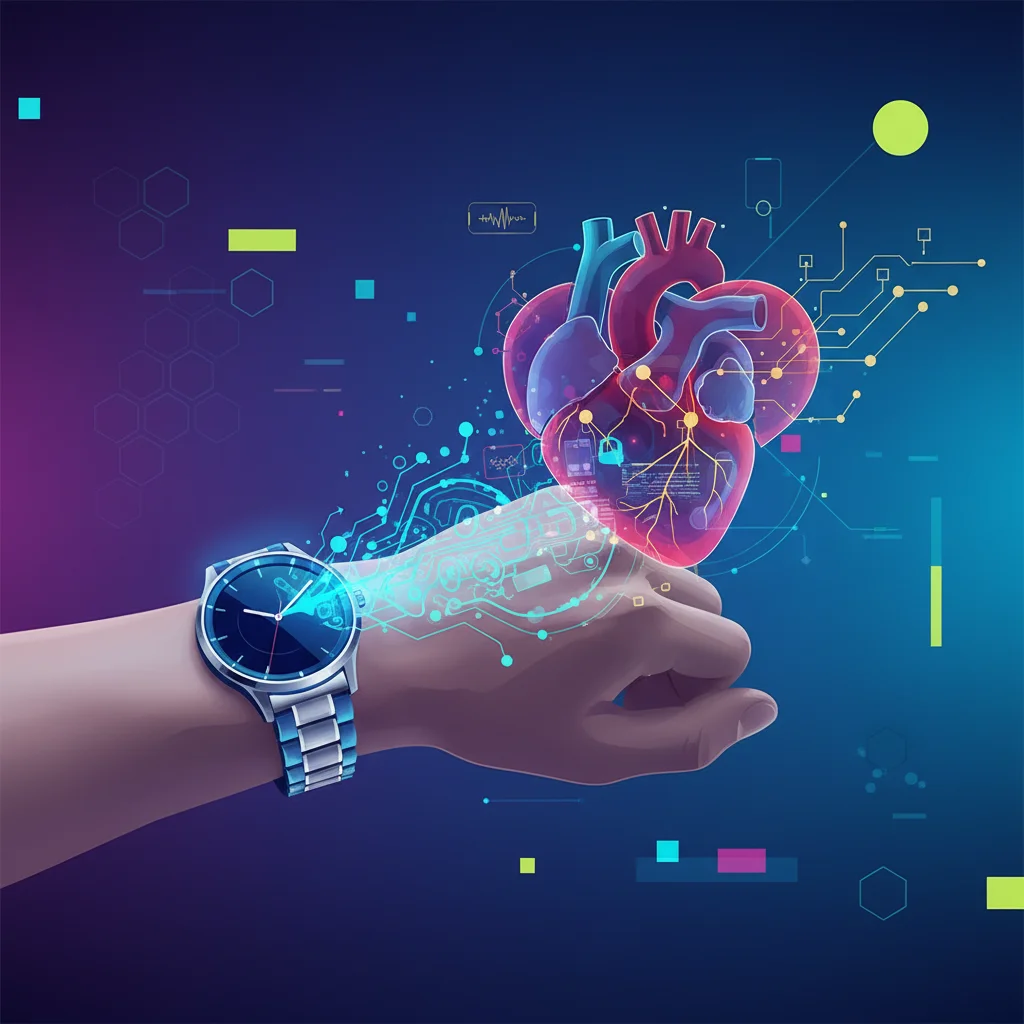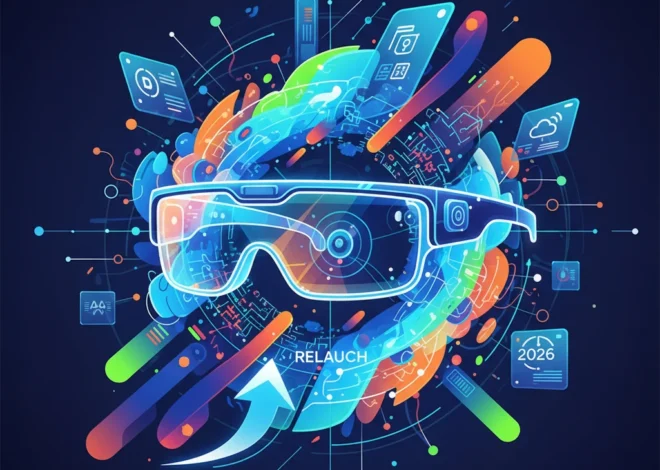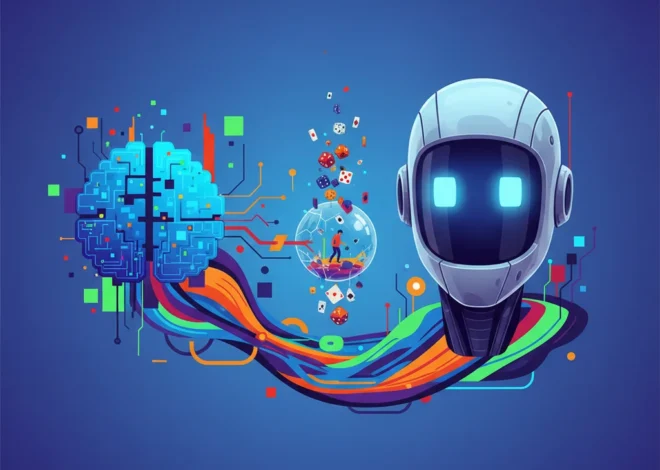
Your Smartwatch Could Soon Detect Heart Damage, Thanks to AI
Look down at your wrist. That sleek device you use to track your steps, reply to messages, and pay for coffee is on the cusp of becoming a powerful, life-saving diagnostic tool. In a groundbreaking development that blurs the lines between consumer tech and clinical medicine, scientists have successfully used data from a standard smartwatch, combined with sophisticated artificial intelligence, to detect a weakened heart pump. This isn’t science fiction; it’s the next frontier in proactive healthcare, and it could change the way we screen for heart disease forever.
Researchers from the Mayo Clinic have developed an innovative AI algorithm that can analyze the single-lead electrocardiogram (ECG) data from a smartwatch to identify ventricular dysfunction—a condition where the heart muscle is damaged and doesn’t pump blood effectively. According to the Financial Times report on the study, this condition affects about 2-3% of the global population and can be a silent precursor to serious heart failure. The problem? It’s often asymptomatic in its early stages, making widespread, early detection a massive clinical challenge. Until now.
This breakthrough represents a monumental shift, moving powerful diagnostic capabilities from the confines of a hospital to the wrists of millions. For developers, entrepreneurs, and tech leaders, this is more than just a medical story; it’s a case study in the power of data, machine learning, and the cloud to democratize healthcare.
From Noisy Data to Clinical Insight: How It Works
You might be wondering how a consumer gadget can possibly replicate the function of a 12-lead ECG machine found in a cardiologist’s office. The secret lies not in the hardware, but in the intelligence of the software and the sheer volume of data it can learn from.
1. The Data Source: The Humble Smartwatch ECG
Modern smartwatches, like the Apple Watch, can take a single-lead ECG. It’s a relatively simple reading, often considered “noisy” and less detailed than a clinical-grade EKG. For years, its primary use has been detecting atrial fibrillation (an irregular heartbeat). However, the Mayo Clinic researchers hypothesized that hidden within this noisy data were subtle, almost imperceptible patterns that could indicate deeper structural problems with the heart.
2. The Brains of the Operation: The AI Model
This is where machine learning comes into play. The researchers took a massive dataset of 12-lead clinical ECGs and their corresponding patient outcomes. They trained a neural network—a type of AI inspired by the human brain—to identify the faint electrical signals associated with a weak heart pump. This model became incredibly adept at spotting the condition from a full 12-lead ECG.
The next, more ambitious step was to adapt this intelligence for the “noisier” single-lead data from a smartwatch. By modifying and further training the algorithm, they created a system that could effectively “read between the lines” of the smartwatch ECG. Dr. Itzhak Zachi, a cardiology specialist at the Mayo Clinic, noted that the AI is “picking up signals in the ECG that humans cannot see.” (source). This is a perfect example of AI augmenting human expertise, not just replacing it.
3. The Engine Room: Cloud and Scalability
The entire operation is powered by the cloud. Processing thousands of ECGs to train the model and then deploying it to analyze data from potentially millions of users requires immense computational power. A SaaS (Software as a Service) model is the logical framework for this kind of application. A user’s watch sends the ECG data to a secure cloud server, the AI algorithm analyzes it in seconds, and the result is sent back to the user or their physician. This scalable architecture is what makes the leap from a research project to a global screening tool possible.
The AI Browser Wars: Is OpenAI's New Venture the Chrome Killer We've Been Waiting For?
The Old vs. The New: A Paradigm Shift in Cardiac Screening
To truly appreciate the innovation at play here, it’s helpful to compare the traditional method of diagnosing a weak heart pump with this new AI-powered approach.
| Feature | Traditional Screening (Echocardiogram) | AI-Powered Smartwatch Screening |
|---|---|---|
| Accessibility | Requires a hospital or clinic visit, specialized equipment, and a trained technician. | Available to anyone with a compatible smartwatch, anywhere, anytime. |
| Cost | High cost per test, often running into hundreds or thousands of dollars. | Extremely low cost per test, leveraging existing consumer hardware. |
| Frequency | Infrequent; typically only performed when a patient presents with symptoms. | Can be performed frequently and non-invasively, enabling continuous monitoring. |
| Nature of Care | Reactive (diagnosing a problem after symptoms appear). | Proactive (screening for asymptomatic conditions before they become critical). |
| Technology Stack | Bulky, proprietary medical hardware. | Consumer electronics, cloud computing, AI software, mobile apps. |
However, we must also consider the other side of the coin. As we delegate more diagnostic responsibility to algorithms, the need for robust cybersecurity becomes paramount. A breach of this kind of health data is catastrophic. Furthermore, we’ll face complex ethical questions about algorithmic bias, the potential for creating a generation of “worried well,” and the responsibility that tech companies bear when their products give medical-grade advice. The future of healthcare isn’t just about better programming; it’s about building a framework of trust, security, and ethics around that code.
Why This Matters for Tech, Startups, and the Future of Work
The implications of this study extend far beyond the cardiology ward. It’s a blueprint for the future of technology-driven solutions across countless industries.
For Developers and Tech Professionals:
This is a testament to the power of sophisticated software to unlock hidden value in existing data. The smartwatch ECG was a limited feature until a clever machine learning model was applied to it. It highlights the growing demand for data scientists and AI engineers who can not only build models but understand how to deploy them in real-world, high-stakes environments. The challenges in programming for this space involve not just accuracy, but also efficiency, security, and interpretability.
For Entrepreneurs and Startups:
The digital health market is exploding, and this research opens up a new frontier in “passive diagnostics.” Startups can innovate by creating platforms that integrate this type of data with other health metrics, providing users with a holistic view of their wellbeing. There are huge opportunities in building the secure cloud infrastructure, the patient-facing applications, and the tools that help clinicians manage this new firehose of data. The key will be navigating the complex regulatory landscape (like FDA clearance and HIPAA compliance) and proving clinical efficacy.
For the Future of Automation:
This is a prime example of intelligent automation. The AI automates the complex and time-consuming task of screening ECGs for a specific condition, allowing doctors to focus their attention on patients flagged as high-risk. This model of AI-assisted human expertise will become the standard across many fields, from law to finance to creative work. It’s about augmenting human capability, not replacing it entirely. The study involved over 125,000 ECGs from across 46 US states and 11 countries, demonstrating a level of scale that would be impossible without this kind of automation (source).
AI's Dot-Com Déjà Vu: Why This Tech Boom is Faster, Fiercer, and Fundamentally Different
The Challenges on the Road to Your Wrist
While the promise is immense, this technology won’t be appearing on your smartwatch app store tomorrow. Several significant hurdles remain before this becomes a mainstream clinical tool.
- Regulatory Approval: Any tool that provides a medical diagnosis must undergo rigorous testing and approval from bodies like the U.S. Food and Drug Administration (FDA). This is a lengthy and expensive process designed to ensure the technology is both safe and effective.
- Cybersecurity and Data Privacy: The sensitivity of personal health information cannot be overstated. Building a system that is virtually impenetrable to cyberattacks is non-negotiable. Users and regulators will need absolute confidence that their most private data is secure.
- Avoiding Algorithmic Bias: AI models are only as good as the data they are trained on. It is crucial to ensure the training data is diverse and representative of all ages, genders, and ethnicities to prevent the algorithm from being less accurate for certain populations.
- Clinical Integration: How does a positive screening result from a watch get to a doctor? How is it integrated into a patient’s electronic health record? Solving this “last mile” problem is critical for the technology to have a real-world impact and avoid simply causing patient anxiety without a clear path to care.
JPMorgan’s New AI Co-worker Is Writing Your Performance Review
A Glimpse into a Proactive Future
The fusion of consumer wearables and clinical-grade AI marks a pivotal moment in the history of medicine and technology. We are moving away from a model of healthcare that is reactive, expensive, and centralized, towards one that is proactive, affordable, and deeply personalized. This single study is a powerful proof-of-concept for a future where chronic diseases are caught earlier, treatments are more effective, and the device on your wrist acts as a constant, vigilant guardian of your health.
The journey from a research paper to a global standard of care is long, but the path is now clear. For all of us in the tech world, it’s a powerful reminder that the code we write, the platforms we build, and the innovation we champion can have a profound and lasting impact on human lives.


